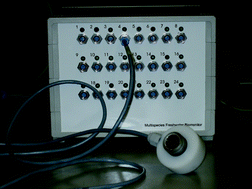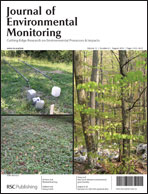The Multispecies Freshwater Biomonitor™ is an online continuous biomonitor which utilises impedance conversion to quantitatively record behavioural responses of vertebrates and invertebrates to environmental change. Here, we extend the use of the MFB into the marine aquaculture environment using the Green crab (Carcinus maenas) as a biological monitor. As a ubiquitous and abundant species, C. maenas can be used in applications such as aquaculture and monitoring of diffuse and point source marine pollution. Four experiments were undertaken to establish: (1) if the electrical field generated by the apparatus had any effect on C. maenas; (2) if the behaviour of C. maenas was altered by the presence of ammonia; (3) if the behaviour of C. maenas was affected by the electrical field when ammonia was present and (4) if defined behaviours could be detected by the MFB. There was no significant effect of the current on C. maenas in the MFB. There was a significant difference in overall expression of behaviour in response to an increasing gradient of ammonia and activity of the chamber. Five behaviours, ‘walking’, ‘climbing’, ‘leg stretch’, ‘cleaning’ and ‘inactivity’ were detected by the MFB. C. maenas appears to be a suitable candidate for use in the MFB in a marine context. Further testing of the biomonitor and C. maenas is required using other toxicants to establish alarm thresholds that could be used in situ for water quality monitoring.

You have access to this article
 Please wait while we load your content...
Something went wrong. Try again?
Please wait while we load your content...
Something went wrong. Try again?


 Please wait while we load your content...
Please wait while we load your content...